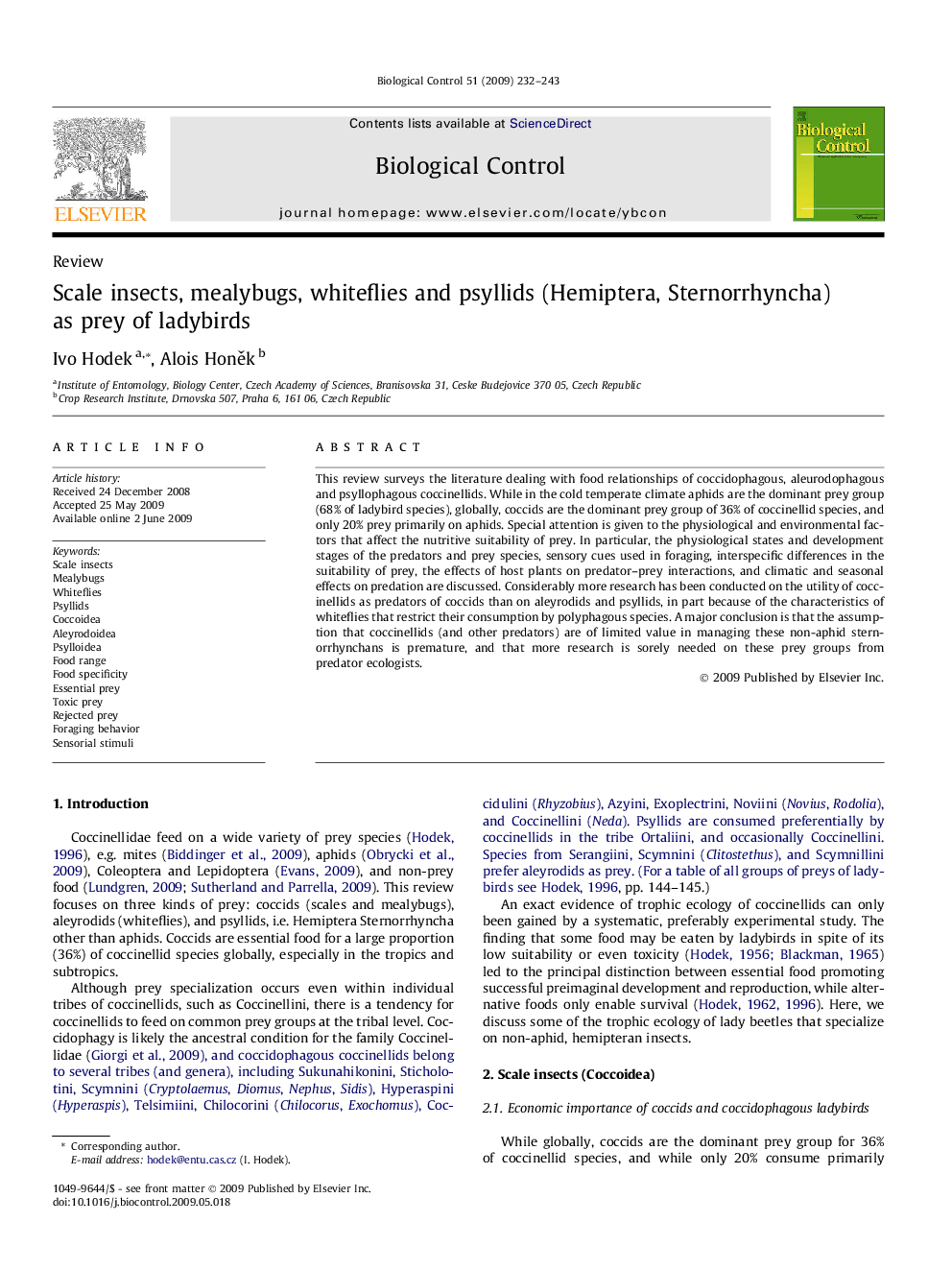| Article ID | Journal | Published Year | Pages | File Type |
|---|---|---|---|---|
| 4504290 | Biological Control | 2009 | 12 Pages |
This review surveys the literature dealing with food relationships of coccidophagous, aleurodophagous and psyllophagous coccinellids. While in the cold temperate climate aphids are the dominant prey group (68% of ladybird species), globally, coccids are the dominant prey group of 36% of coccinellid species, and only 20% prey primarily on aphids. Special attention is given to the physiological and environmental factors that affect the nutritive suitability of prey. In particular, the physiological states and development stages of the predators and prey species, sensory cues used in foraging, interspecific differences in the suitability of prey, the effects of host plants on predator–prey interactions, and climatic and seasonal effects on predation are discussed. Considerably more research has been conducted on the utility of coccinellids as predators of coccids than on aleyrodids and psyllids, in part because of the characteristics of whiteflies that restrict their consumption by polyphagous species. A major conclusion is that the assumption that coccinellids (and other predators) are of limited value in managing these non-aphid sternorrhynchans is premature, and that more research is sorely needed on these prey groups from predator ecologists.
